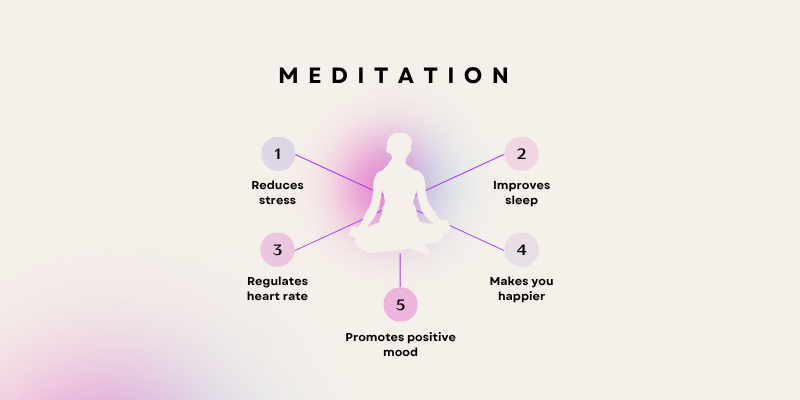Collagen, the most abundant protein in the human body, plays a critical structural role in maintaining the integrity of skin, bones, muscles, and connective tissues. With increasing attention in both scientific and consumer circles, collagen is now widely recognised for its health benefits and versatility in daily life. From dietary supplements to skincare and medical applications, collagen has become a cornerstone of modern wellness and biotechnology. This article explores what collagen is, its scientifically validated benefits, common uses, and reliable places to purchase it.
1.0 What is Collagen?
Collagen is a fibrous protein made up of amino acids, primarily glycine, proline, and hydroxyproline. It is a key component of the extracellular matrix that provides structural support to tissues and organs (Sultana et al., 2018). There are at least 28 types of collagen, with Type I, II, and III being the most prevalent in the human body.
- Type I is found in skin, bones, and tendons;
- Type II in cartilage;
- Type III in internal organs and skin.
It is synthesised naturally by the body but decreases with age, starting in the mid-20s and accelerating due to factors such as UV exposure, smoking, and poor nutrition (Bhagwat & Dandge, 2016).
2.0 Health Benefits of Collagen
2.1 Improved Skin Health
Numerous studies highlight collagen’s role in skin elasticity and hydration. Collagen peptides, when consumed orally, have been shown to increase dermal collagen density and reduce wrinkles (Zhao et al., 2021). This effect is due to increased production of hyaluronic acid and fibroblast activity.
“Collagen peptides have proven anti-ageing properties by restoring dermal structure and improving hydration” (Edgar et al., 2018, p.2).
2.2 Joint and Bone Health
Collagen supplementation has shown promise in treating osteoarthritis and improving joint health. A systematic review concluded that hydrolysed collagen can reduce joint pain and increase mobility in patients with osteoarthritis (Van Vijven et al., 2012). Moreover, collagen aids in bone density retention and has been investigated as a supportive therapy in osteoporosis.
2.3 Muscle Mass and Strength
Collagen, when combined with resistance training, has been found to increase muscle mass in elderly individuals. Though it is not as potent as whey protein in stimulating muscle protein synthesis, its benefits for joint health may provide additional functional improvements in older adults (Oikawa et al., 2020).
2.4 Wound Healing and Tissue Regeneration
Collagen’s biocompatibility and bioactivity make it ideal for wound healing. Collagen-based biofilms have been applied in regenerative medicine, especially in wound dressings and skin grafts (Zhou et al., 2024). The protein promotes angiogenesis and accelerates the re-epithelialisation process.
2.5 Gut and Cardiovascular Health
Although research is emerging, preliminary findings suggest that collagen supports gut integrity by maintaining the lining of the digestive tract and potentially supporting cardiovascular health by providing elasticity to blood vessels (Chamieh et al., 2016).
3.0 Uses of Collagen in Daily Life
Collagen’s diverse properties have facilitated its use across multiple sectors:
3.1 Nutritional Supplements
Collagen supplements—usually in hydrolysed (collagen peptides) or gelatin form—are commonly taken to improve skin, joints, hair, and nails. These are available as powders, capsules, or drinks. Collagen peptides are easily digestible and rapidly absorbed.
3.2 Food and Beverage Industry
In the food industry, collagen is used in products like jelly, desserts, protein bars, and bone broth. Gelatine, a denatured form of collagen, is especially common in culinary applications (Alipal et al., 2021).
3.3 Sports Nutrition and Fitness
Athletes often use collagen for injury recovery, joint support, and soft tissue repair. Collagen supplementation may help with ligament resilience and reduce inflammation from strenuous workouts (Moskowitz, 2000).
4.0 Ways to Incorporate Collagen into Your Routine
4.1 Powdered Collagen Peptides
Most popular and versatile form
✅ How to Use:
- Mix into hot or cold drinks: coffee, tea, juice, smoothies, or water.
- Add to food: stir into yoghurt, oatmeal, soup, or baked goods.
- Dosage: Typically, 5–10g daily (check product label).
4.2 Collagen Capsules/Tablets
Convenient for travel or busy routines
✅ How to Use:
- Swallow with water or juice.
- Usually taken once or twice a day, depending on the dose per capsule.
Best for: People who prefer no taste, portable format, and easy portion control
4.3 Collagen Drinks / Liquid Collagen
Ready-to-drink or concentrate shots
✅ How to Use:
- Drink straight from the bottle or mix into water.
- Often combined with hyaluronic acid, vitamin C, or biotin.
Best for: Quick absorption, beauty-focused users, and on-the-go lifestyles
4.4 Collagen Gummies
Tasty and chewable option
✅ How to Use:
- Chew as directed (usually 1–3 gummies per day).
- May include flavourings, vitamins, or minerals.
Best for: Younger users, those who dislike pills, or a snack-style supplement
5.0 Sources and Types of Collagen
Collagen is derived from various animal sources, including:
- Bovine (from cow hides and bones) – rich in Type I and III
- Marine (from fish skin/scales) – rich in Type I, with better absorption
- Porcine (from pigs) – contains Type I and III
- Chicken (cartilage) – mostly Type II, good for joint support
Emerging interest is also found in vegan collagen boosters, which do not contain collagen but stimulate endogenous production using vitamins, amino acids, and herbs (Knowles et al., 2013).
6.0 Where to Buy Collagen
Collagen is widely available and can be purchased both online and in physical stores. Trusted sources include:
6.1 Pharmacies and Health Stores
- Boots, Holland & Barrett (UK)
- CVS, Walgreens (USA)
6.2 Online Retailers
- Amazon UK (https://www.amazon.co.uk)
- MyProtein (https://www.myprotein.com)
- Vital Proteins (https://www.vitalproteins.com)
- Planet Organic (https://www.planetorganic.com)
When purchasing collagen, look for hydrolysed collagen or collagen peptides for better absorption. Also, ensure the product is third-party tested for contaminants and sourced ethically (Alipal et al., 2021).
Collagen is not just a beauty buzzword but a scientifically validated structural protein that plays vital roles in human health. From enhancing skin elasticity to supporting joints, muscle, and tissue repair, its applications are vast and continually expanding. With growing scientific backing and accessibility through various products, collagen continues to be an essential component of modern health and wellness regimes.
References:
Alipal, J., Pu’Ad, N.A.S.M., Lee, T.C., & Nayan, N.H.M. (2021). A review of gelatin: Properties, sources, process, applications, and commercialisation. Materials Today: Proceedings, 42, 2373–2380. https://www.sciencedirect.com/science/article/pii/S2214785320406406.
Barolet, D., Roberge, C.J., Auger, F.A., et al. (2009). Regulation of skin collagen metabolism in vitro using a pulsed 660 nm LED light source. Journal of Investigative Dermatology, 129(2), 466–472. https://www.sciencedirect.com/science/article/pii/S0022202X15341749.
Bhagwat, P.K., & Dandge, P.B. (2016). Isolation and application of fish collagen. Biocatalysis and Agricultural Biotechnology, 10, 264–271. https://www.sciencedirect.com/science/article/pii/S1878818116300925.
Chamieh, F., Collignon, A.M., Coyac, B.R., et al. (2016). Accelerated craniofacial bone regeneration through dense collagen gel scaffolds. Scientific Reports, 6, 38814. https://www.nature.com/articles/srep38814.
Edgar, S., Hopley, B., Genovese, L., et al. (2018). Effects of collagen-derived bioactive peptides on human dermal fibroblasts. Scientific Reports, 8, 10474. https://www.nature.com/articles/s41598-018-28492-w.
Knowles, J.C., Syed, O., Mudera, V., et al. (2013). Collagen—emerging therapies. Advanced Drug Delivery Reviews, 65(4), 429–456. https://www.sciencedirect.com/science/article/pii/S0169409X12002542.
Moskowitz, R.W. (2000). Role of collagen hydrolysate in bone and joint disease. Seminars in Arthritis and Rheumatism, 30(2), 87–99. https://ch-alpha.hu/wp-content/uploads/2017/03/Moskowitz_study.pdf.
Oikawa, S.Y., Kamal, M.J., Webb, E.K., et al. (2020). Whey protein but not collagen peptides stimulate muscle protein synthesis in older women. The American Journal of Clinical Nutrition, 112(6), 1373–1384. https://www.sciencedirect.com/science/article/pii/S0002916522010528.
Van Vijven, J.P.J., Luijsterburg, P.A.J., Verhagen, A.P., et al. (2012). Symptomatic and chondroprotective treatment with collagen in osteoarthritis: A systematic review. Osteoarthritis and Cartilage, 20(8), 809–821. https://www.sciencedirect.com/science/article/pii/S1063458412007868.
Zhao, X., Zhang, X., & Liu, D. (2021). Collagen peptides and synthetic peptides in improving skin health. Journal of Functional Foods, 87, 104781. https://www.sciencedirect.com/science/article/pii/S1756464621003297.













